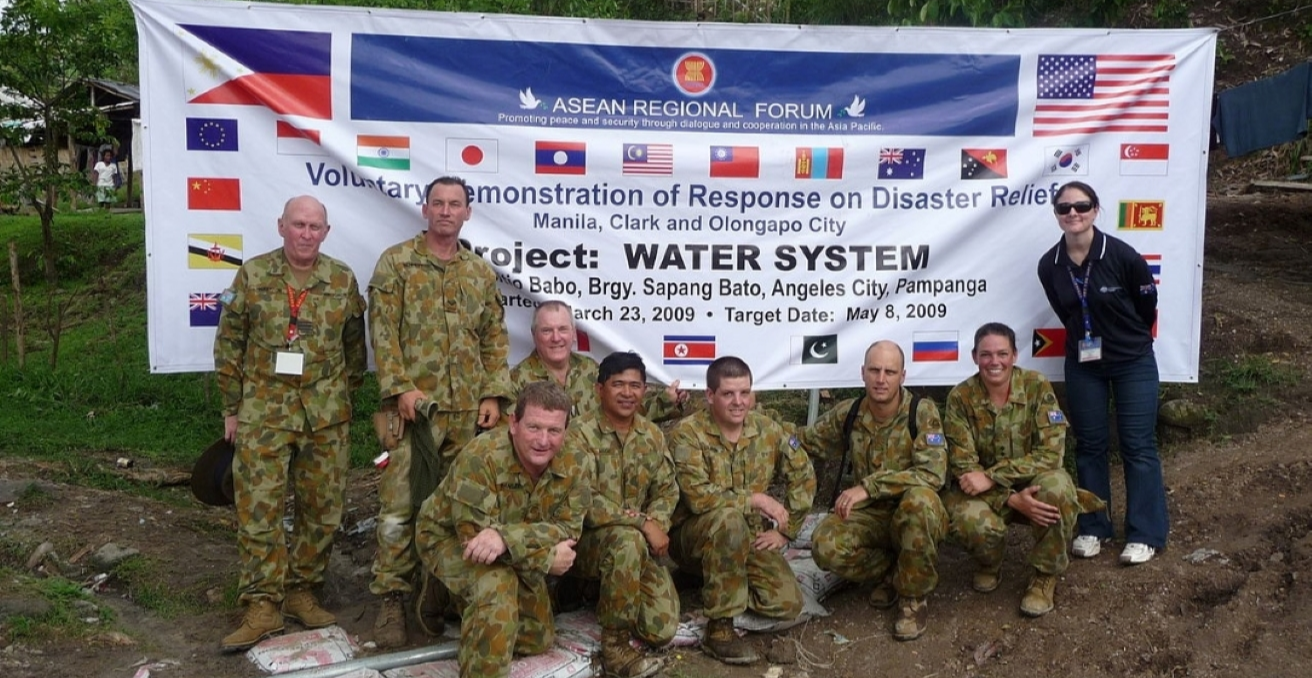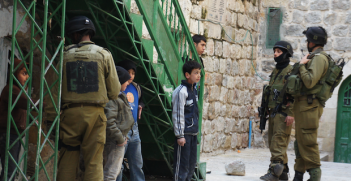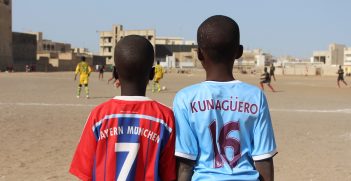Conceptualising Humanitarian Civil-Military Partnerships in the Asia-Pacific: (Re-)ordering Cooperation

Recent developments have influenced the relationship between civilian agencies, militaries and non-state actors in the Asia-Pacific to facilitate an improvement in humanitarian civil–military relations to protect and assist disaster-affected communities.
The Asia-Pacific has been disproportionately affected by disasters over the last ten years. It is the world’s most densely populated region and one that has experienced 69.5 percent of the last decade’s earthquakes, 69 percent of landslides, 43.7 percent of storms and 41.1 percent of floods. The Asia-Pacific also has the largest share of affected people (79.8 percent) and the largest share of estimated damages (45.5 percent) over the past decade. In disaster settings, effective multi-stakeholder partnerships are essential to protect and assist affected communities. However, in recent years civil–military relations have become more challenging because of more integrated international interventions, particularly in conflict and complex humanitarian emergencies. Concurrently, the international community has seen the rapid growth in the size and number of actors engaged in the humanitarian field. This includes both state-based and non-state actors including civilian agencies, militaries, and the various manifestations of non-state actors (including but not limited to international NGOs, faith-based organisations, local civil society groups, spontaneous volunteer groups and the private sector).
Moreover, in crisis contexts, many affected states in the Asia-Pacific first deploy their militaries or paramilitary institutions to respond to a disaster. Foreign counterparts show their bilateral support to the affected country by providing humanitarian assistance and disaster relief including direct military support to the disaster-affected state. Military provision of international disaster relief in the Asia-Pacific is an increasingly important domain in which security cooperation and competition occur. A traditional or “Dunantist” view of humanitarianism is founded on the logic that humanitarian assistance is a universal right, victims are those without assistance, and humanitarian agencies assert their right to access the affected population. This often means it is done on their own terms with little reference to the policies, concerns and capacities of the affected state. The absence of coordination mechanisms or institutions at the national, regional or international levels has arguably further impeded the prospects for humanitarian civil–military partnerships and their efficiency and effectiveness.
Civil–military coordination
The United Nations (UN) defines the term humanitarian “civil–military coordination”or “CMCoord” as “the essential dialogue and interaction between civilian and military actors in humanitarian emergencies that is necessary to protect and promote humanitarian principles, avoid competition, minimise inconsistency, and when appropriate pursue common goals. It provides for a spectrum of interaction between military and humanitarian actors, ranging from co-existence to cooperation. Coordination is a shared responsibility facilitated by liaison and common training.” For a humanitarian response to be effective and for the militaries, civilian agencies, and non-state actors to operate in the crisis-affected area, without detriment to the civilian character of humanitarian assistance and disaster response, dialogue and interaction between the parties is critical. “CMCoord” refers specifically to the interaction between humanitarian organisations and militaries under humanitarian circumstances in the United Nations system, while “civil–military relations” broadly refers to the interaction between militaries and a wide range of civilian actors such as INGOs, governments, legal practitioners, security agencies, human rights advocates, and development actors, and can be practiced for a wide range of purposes.
The UN Office for the Coordination of Humanitarian Affairs (OCHA) provides guidelines on the use of foreign military assets in disaster response operations, which is particularly relevant to the Asia-Pacific as the most exposed region to natural hazards. Acknowledging that there are a variety of actors and options for any coordination architecture and acknowledging that any response will be dependent on the affected state’s national structure and inherent circumstances, the OCHA guidelines for the Asia Pacific recognise the need for militaries to remain flexible in integrating with existing structures. Coordination therefore represents a variety of arrangements, such as liaison arrangements between a civil–military operations centre and the humanitarian community, or through placing military liaison staff within humanitarian coordinating structures. Yet “coordination” itself can be better understood as a particular order of civil–military partnership.
Civil–military relations cut across a spectrum, ranging from coexistence at one end to coordination, cooperation, and collaboration at the other end. Co-existence refers to a situation where the minimum necessary information has been shared between the humanitarian and military actors, and could typically include sharing of information about security, movement of humanitarian convoys, and the management of shared resources and logistics, such as a port or airport. Cooperation, on the other end of the spectrum, refers to a maximum state of coordination between civilian and military actors, where there is a range of cooperative relations that includes joint planning, division of labour, and the open sharing of information.
Within the Asia-Pacific, this humanitarian civil–military partnership spectrum emerged within a regional architecture of dominant non-intervention and consensus-building norms, and an intimate civil–military administrative relationship in some states. As such, the level of partnership between civilian agencies, militaries, and non-state actors in the international system is shaped by pre-existing relations with major powers and a nascent regional normative and legally-binding framework. The understanding of humanitarianism in the region deviates from the formal humanitarian principles through the engagement of state actors, but this highlights the dominant experience of the region in disaster response outweighing humanitarian response to conflicts. In disaster response, often national governments remain intact and the affected areas of a disaster are sub-national in geographical scope in contrast, the global majority of humanitarian operations where conflict can place national governments as a party to the conflict rendering humanitarian assistance they provide as partial within the conflict context. As a result, the majority of humanitarian responses the region experiences are a much more proactive state-led conceptualisation reflected in the most developed types of humanitarian civil–military partnerships witnessed in the Asia-Pacific.
Challenges in humanitarian civil–military partnerships
To examine the current realities in humanitarian civil–military relations, it is important to first understand the key challenges to effective partnerships. A common theme has been that military and humanitarian actors have very different cultures, and their effective interaction poses several challenges because of this. Military culture is based on a clear chain of command and strict funding sources. This can be quite the opposite for the humanitarian community, whichhas been described as a “loosely configured system or network of actors which coalesce around common funding sources and voluntary standards, without an effective chain of command.” The differences in culture can be attributed to more fundamental differences in motivations, goals, and approaches. These include the politicising and militarising of humanitarian assistance and disaster relief, the use of counter-insurgency strategies, taking a stabilisation/comprehensive approach to overcome the crisis, deploying military assets in humanitarian response operations, inconsistency, diversity, and division within the humanitarian community, the lack of clarity in the roles and responsibilities of responders, and the lack of guidance in complex humanitarian emergencies. However, the caveat here is that while these interactions are present and have substantively grown since the ASEAN Agreement on Disaster Management and Emergency Response (AADMER) came into force in 2009, they are not necessarily institutionalised relationships and are highly inter-personal in nature. It, therefore, begs the question whether when there is staff turnover within the humanitarian space within the civilian agencies, militaries, and non-state actors will the higher order partnerships survive in the same way or in what ways will they change?
Military engagement in relief efforts is not a new development and can be traced back to the time of Alexander the Great. What has been evolving however is the purpose of this military engagement, and the extent to which there is engagement, with military forces increasingly undertaking a range of relief activities to achieve tactical and strategic objectives. Local and foreign military engagement can be seen in disaster contexts too, significantly in the 2004 Indian Ocean Tsunami, where many governments deployed their militaries to support the many countries that were affected by the tsunami and resulting earthquakes and floods. Interestingly, the increased deployment of military assets and capabilities in disaster response is linked to the increase in the incidence of such disasters.
In many policy frameworks, the use of military and civilian defence assets (MCDA) is restricted to situations of “last resort.” This is due to the increasing politicisation of humanitarian assistance and disaster relief as it relates to the political motivations for the deployment of militaries. Indeed, some authors argue that the deployment of militaries for humanitarian purposes amounts to “security competition by proxy” and refers to this as the “competition of compassion” which is simultaneously a trial of national hard and soft powers. According to OCHA Guidelines on the Use of Military and Civil Defence Assets to Support United Nations Humanitarian Activities in Complex Emergencies, and the Guidelines on the Use of Foreign Military and Civil Defence Assets in Disaster Relief (the Oslo Guidelines), the principle of last resort requires that MCDA are used in humanitarian operations subject to four criteria:
Unique capability, when no appropriate alternative civilian resources exist;
Timeliness, when the urgency of the task demands immediate action;
Clear humanitarian direction, where control over the use of military assets is civilian; and
Time-limited, when the use of military assets in humanitarian activities is clearly limited in time and scale.
Adherence to this principle, however, has been problematic. Deploying militaries and their assets in complex emergencies can often be a politically motivated decision. Indeed, within the context of the Asia-Pacific, rather than the military being a last resort, it is often referred to as a “first responder” in the context of disasters due to its surge capacity and access to necessary assets. The Deputy Prime Minister of Malaysia in 2008, Najib Razak stated at the Shangri-La Dialogue in Singapore that ASEAN Member State militaries would be the most effective humanitarian responders to those affected by Cyclone Nargis and that Myanmar should be assured “that our involvement is strictly humanitarian in nature and there is no other agenda we have in mind when we sent our military into the various disaster-stricken areas in other countries in the past.” This reliance on and faith in militaries was more recently visible in Indonesia where the constitution was amended to allow serving military officers to run civilian agencies like the national civilian disaster management authority, BNPB—Badan Nasional Penanggulangan Bencana.
The close proximity of civilian agencies and militaries in the Asia-Pacific encapsulates the challenge to the dominant global principle of militaries as a last resort within the humanitarian sphere. The last resort principle in abstract could be more specifically appropriated to conflict settings only rather than encapsulate humanitarian responses to disasters as well where the first responder role takes precedence. It further illustrates that the humanitarian experience in the Asia-Pacific is characterised by its exposure to natural hazards over-and-above high-intensity conflict.
Precarity and heterogeneity of disaster relief actors
A key challenge in the relationship between civilian agencies, militaries, and non-state actors in humanitarian assistance and disaster relief is the continued politicisation and militarisation of humanitarian assistance. The very notion of humanitarian action invokes the concepts of humanity and impartiality, and this does not sit well with military engagement because, by their very nature, militaries are partial. Regardless of the advantages that militaries possess, there remain concerns about linking humanitarian and military objectives, and the resulting expansion of militaries into activities beyond their traditional areas of expertise and mandates. Operational partnerships between civilian agencies, militaries, and non-state actors also remain haphazard and inconsistent in general.
Challenges remain because within the humanitarian community itself, views on civil–military coordination are “at best diverse, at worst inconsistent and contradictory.” The varying mandates under which militaries are deployed can mean that it is difficult for the humanitarian community as a whole to agree on an appropriate singular level of interaction. Most humanitarian action however has not involved the military. Integrating soldiers into the complex network of relief providers undoubtedly further complicates humanitarian assistance and disaster relief.
Despite these challenges, the difficulties in achieving coherence in civil–military partnerships can be attributed to factors internal to the humanitarian community, such as the proliferation of actors who engage in humanitarian assistance, the expanding scope of these activities, and donor pressure. The humanitarian sector has greatly expanded in the last ten years, and the number of actors has also increased. There are now many actors with different mandates and agendas and different levels of professionalism, expertise and resources which presents a major challenge to operational partnerships. Further complicating partnerships is the presence of multi-mandate organisations like UNICEF and WFP, which often pursue both humanitarian and development objectives in the same context.
There is a clear need for a more coherent approach to humanitarian civil–military partnerships, which presupposes an awkward truth—”that humanitarian actors recognise there are no legitimate perimeters to humanitarian action, valid at all times in all situations, which become clearly visible once the mists of ‘military-humanitarian confusion’ have lifted and humanitarians are protected from any political fallout. There is space, however, for negotiation, power games and interest-seeking between aid actors and authorities.” However, previous and current IASC guidance does not fully reflect this complex negotiating environment. The Oslo Guidelines might be the leading international framework for the role of militaries during disaster response, but they do not provide any guidance on relations between the international humanitarian community and the host state military. Given that the host state military is often the first responder in a disaster, this is a major gap.
The Oslo Guidelines are also limited as they do not address how civil–military relations change during a disaster response. Existing guidelines offer limited practical help on how this relationship should work and change where situations overlap. There is a need to address these gaps in guidance, particularly where disasters become understood as complex humanitarian emergencies where disasters affect communities with pre-existing tensions and conflicts. It is also important to understand the current ground realities of the Asia-Pacific and the interactions between the various actors to develop a more structured approach when responding to humanitarian crises.
One challenge for humanitarian civil–military partnerships is the integration of local people, local government, local civil society organisations into them, whose roles are often under-appreciated and overlooked. This is important because local knowledge provides a robust base from which collaborative disaster response can start. The sub-national dynamics within the region are the next frontier in cooperation in humanitarian assistance and disaster relief from inter-city to inter-provincial humanitarian cooperation. It, therefore, should come as no surprise that in the Asia-Pacific, the ARF Guidelines state that the local population should be included in its own response and recovery efforts, and any HADR efforts should be concerned with community awareness.
The key challenges identified towards better humanitarian civil–military partnership demonstrates the need to improve conceptualisation of partnership between civilian agencies, militaries, and non-state actors in disaster preparedness and response. It is acknowledged that generic guidance, by its very nature, cannot take account of national or regional variations in how humanitarian civil–military partnerships are understood. Political traditions and past experiences shape civilian approaches with the military, and vice versa.
However, early structured engagement between civilian agencies, militaries and non-state actors will undoubtedly improve once the limits and possibilities of partnerships in disaster preparedness and response are better understood. If this structured engagement can be institutionalised then it will provide for greater predictability, role and niche capacity development. However, at present these developments remain wedded to a current continuity of personnel in position to facilitate humanitarian civil–military partnership in the Asia-Pacific, once these personnel rotate or retire, only then will the level of institutionalisation be tested and the relationships between the different stakeholders be in a position to be fully assessed. Furthermore, this article has focused on the humanitarian experience in the Asia-Pacific with disasters. It, therefore, remains untested whether these humanitarian civil–military partnerships can translate into more complex humanitarian settings.
Dr Alistair D. B. Cook is Coordinator of the Humanitarian Assistance and Disaster Relief Programme and Research Fellow at the Centre for Non-Traditional Security Studies (NTS Centre), S. Rajaratnam School of International Studies (RSIS), Nanyang Technological University (NTU) in Singapore. His research interests focus geographically on the Asia-Pacific and Myanmar in particular and thematically on humanitarian assistance and disaster relief (HADR), foreign policy and regional cooperation. Sangeetha Yogendran is a PhD research fellow at the University of Ghent. She conducts research on transitional justice and human rights in conflict.
This article consists of extracts from “Conceptualising humanitarian civil-military partnerships in the Asia-Pacific: (Re-)ordering cooperation.” It was originally published in the Australian Journal of International Affairs.





